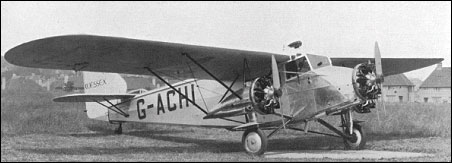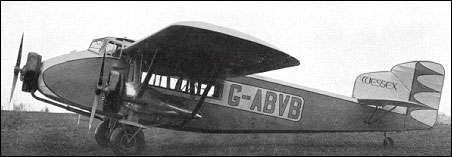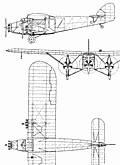 |
Westland Wessex1929 |  |
| SIX-SEAT CABIN MONOPLANE | Virtual Aircraft Museum / United Kingdom / Westland |
 |
The first Westland commercial aeroplane, the 1919 Limousine four-seat cabin biplane, was an early effort to produce a light air-liner leading, in the following year, to the successful Six-seat Limousine, but it was nearly ten years before the Westland design team produced another passenger aircraft, this time a six-seat tri-motor high-wing monoplane, and again they led the field, being the first British firm to design and produce a low-powered three-engined commercial aircraft. This machine, known at first as the Westland IV, when fitted with Cirrus engines, and later as the Wessex, with Genet engines, was designed, built and flown in a few months, being initially flight-tested by Flt./Lt. L. G. Paget, A.F.C., early in 1929. Originally fitted with three 90-h.p. A.D.C. Cirrus III engines, the prototype - G-EBXK - was later fitted with the five-cylinder Genet engine, but the production models had the seven-cylinder A.S. Genet-Major engines installed as a standard. A curious feature of the Wessex, which seems to have escaped general notice, is that the rudder was identical with that of the Wapiti, the reason being that in order to speed up construction of the prototype a standard Wapiti rudder was fitted "on spec," but proved so successful that it was retained. Customers for the Wessex were readily forthcoming and included Imperial Airways, Railway Air Services, the Belgian air line SABENA, Sir Alan Cobham's Air Circus and the Portsmouth, Southsea and Isle of Wight Aviation Co., Ltd. The latter organisation had a specially re-designed Wessex, G-ABVB, for use on their Portsmouth-Ryde (I.o.W.) ferry route. This machine, which was flight-tested by Mr. H. J. Penrose, had a complete metal fuselage structure and increased seating capacity to carry eight passengers and a crew of two; the pilot's cabin was also raised to give a view over the top of the wing. In the spring of 1931 a chartered Wessex featured in what was probably the first aerial board meeting, the occasion being an air survey by the Directors of the Sheffield and South Yorkshire Navigation Co. of their network of canals. The Second World War found the Wessex still giving good service, several being equipped to train radio operators and navigators for the Royal Air Force. A.H.Lukins "The Book of Westland Aircraft", 1943
|  COMPANY PROFILE | |||||||||||||||||||||||||||||||||||||||||||||||
 |

|


